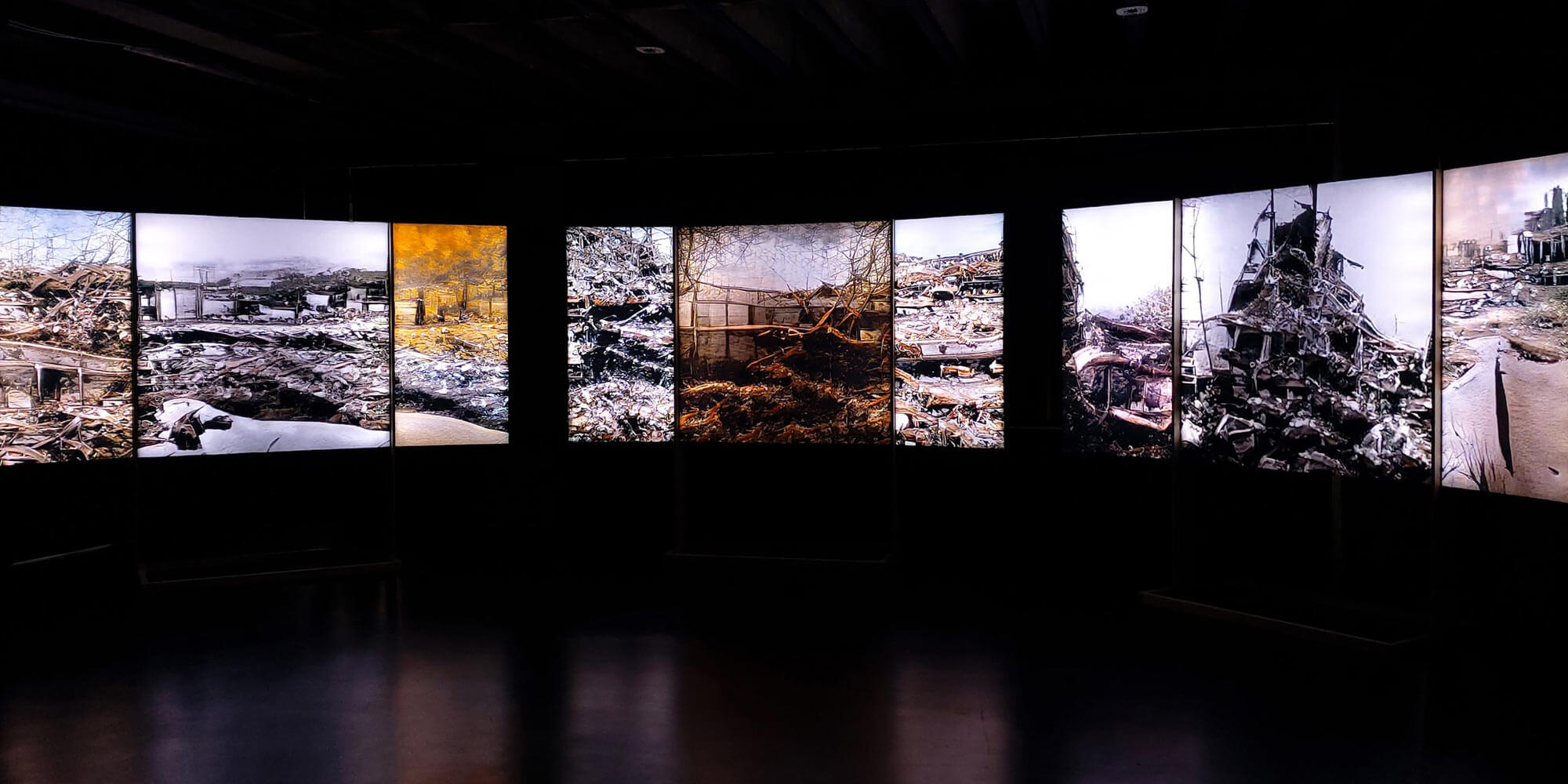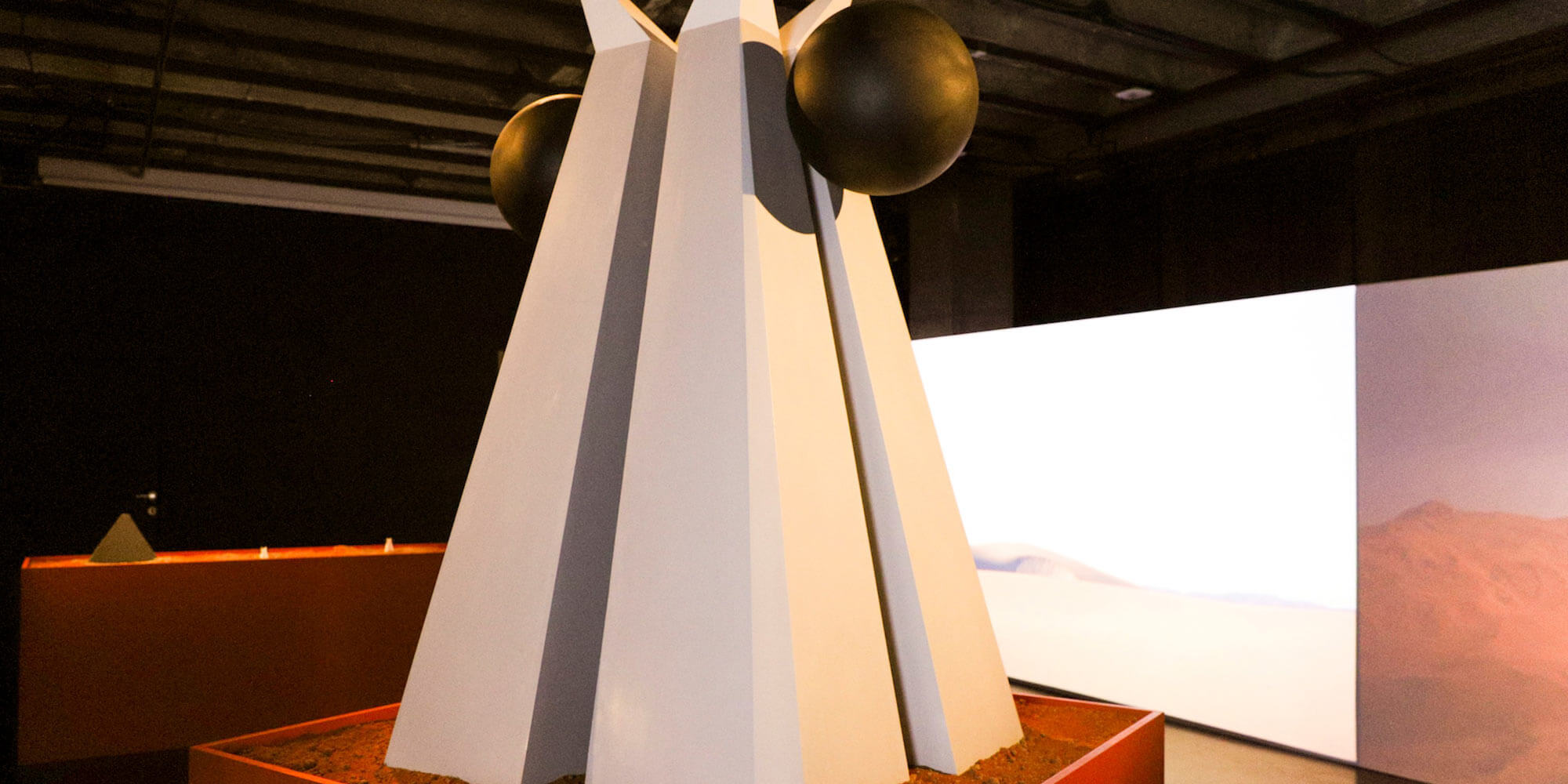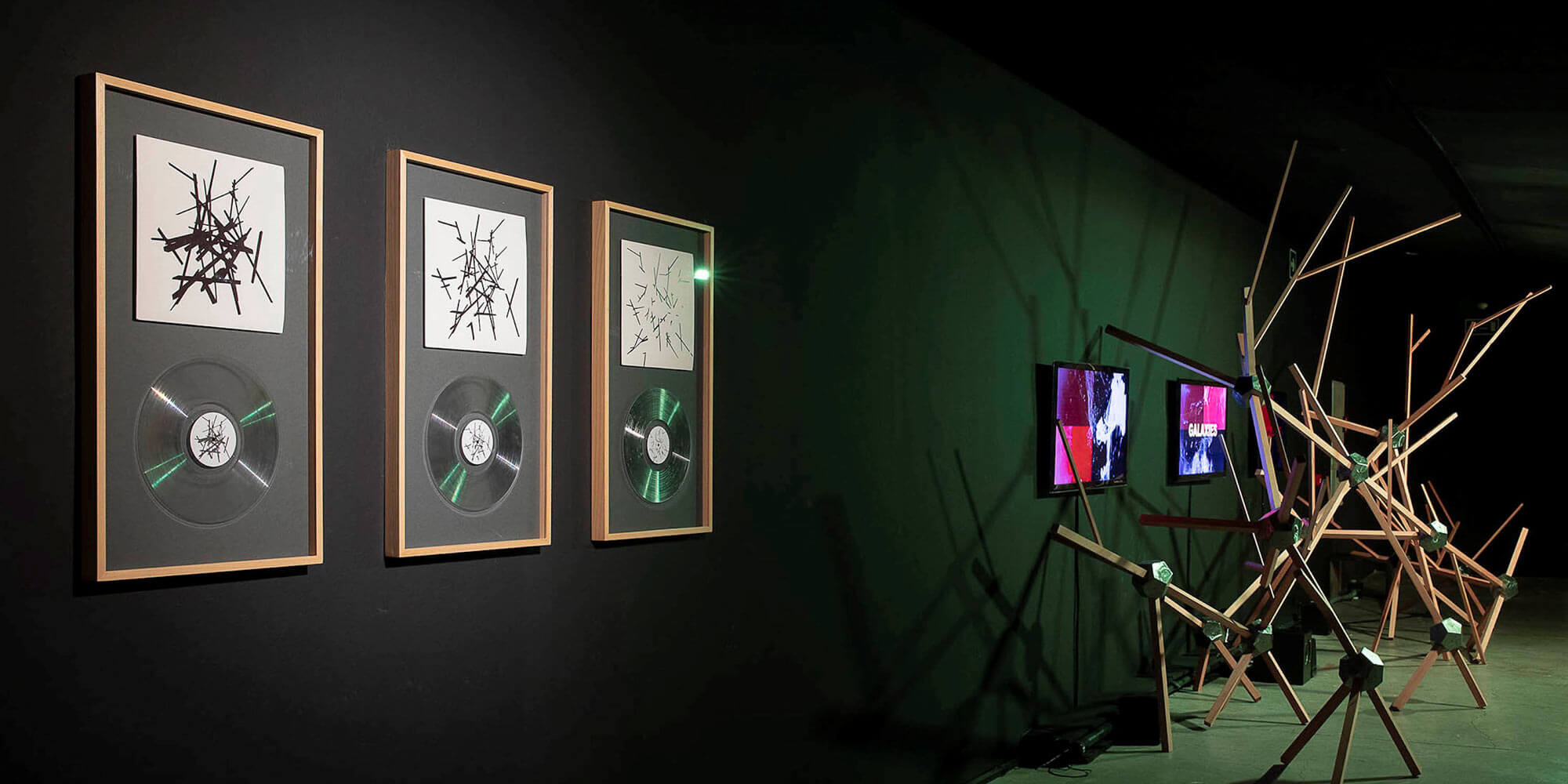Ars Electronica x Institut Ramon Llull x Hac Te x NewArtFoundation
We are thrilled to announce the Randa Art|Science Residency, which is organized by the Institut Ramon Llull and hosted by Ars Electronica and the Barcelona Institute of Science and Technology (BIST), in collaboration with the new hub of Art, Science, and Technology from Barcelona, Hac Te, and the NewArtFoundation. As Pere Almeda, the Director of Institut Ramon Llull states, “The Randa Residency project is the flagship initiative of our brand-new residencies program. It is very important for Institut Ramon Llull to partner with top institutions like Ars Electronica in order to fulfill our mission.”
“The ‘Ars Combinatoria’ generative and permutative ideas of medieval writer and philosopher Ramon Llull have been acknowledged as key precursors of Computer Science thought and a clever example and source of inspiration for Art and Science interconnections. The Randa Art|Science Residency name pays tribute to the cave in the mountain on Mallorca Island where Llull had the illuminations that pushed him to develop his remarkable and distinctive method of thinking and experimenting based in interdisciplinary and intercultural dialogue through a universally valid system of symbols” describes Pau Alsina, professor at Open University of Catalonia and co-director of Hac Te.
“The practice of art and science has been part of Ars Electronica’s genetic code since its inception, and this partnership aims to erase the distinctions between these two “cultures” and cultivate a new culture where imaginative minds from both art and science fields converge to address the challenges posed by the climate crisis,” says Christl Baur, Head of the Ars Electronica Festival.
We are pleased to announce that Andy Gracie (UK/ES) has been selected as the winner of the Randa Art|Science Residency. Gracie’s project, Massive Binaries, draws from the notion of extracting information and knowledge from the processes of merging and collision, specifically focusing on gravitational waves and particle accelerators and their applications to cosmology.
Zoila Babot, Head of Communications of BIST states “We are very excited to host Andy Gracie at one of the BIST Community research centres, the Institut de Física d’Altes Energies (IFAE), which is devoted to theoretical and experimental high energy physics research. We think that both the dialogues during the creation process and the final art piece will be very enriching for our scientific community and for the public.”
As director of the NewArtFoundation and partner in the program, Vicente Matallana focuses on the role “The NewArtFoundation plays in the development of the Randa Residency, extending beyond the production of the artwork. It is responsible for preserving the artwork in its facilities and making it accessible to curators and researchers, promoting its diffusion through exhibition programs. This ensures that the artwork is preserved, creating a legacy for future generations.”
Astrid Rousse, Executive Manager of Hac Te, affirms that “Randa Residency is a great example of a symmetrical collaboration between arts and science, and it proves the interest of cross-disciplinary projects shared from the different communities. This program reaffirms the role of Hac Te in building bridges between individuals and institutions from different fields with the common aim of generating new ways of expression and knowledge”, as BIST and the NewArtFoundation are partners in the hub.
We would like to provide some insight into the selection process of the winning artist. The call for the Randa Art|Science Residency was a closed call, and four renowned advisors with an expert in media arts were asked to nominate artists from Catalonia. From the pool of nominees, the consortium of partners carefully selected ten artists and invited them to submit a project proposal. We were thrilled to receive seven submissions, each one showcasing an inspiring combination of art and science.
After a thorough evaluation process, the winning project was selected in a jury meeting. We are proud to announce that the decision was made unanimously by the project partners, including the scientific partner. The proposal by Andy Gracie captivated us with its innovative approach to addressing climate challenges through art and science.
As part of the residency, Andy Gracie will receive a €20,000 fee and production budget to develop and produce the work. The partners recognize and thank all submitters by compensating them for their time and efforts with €300 for creating their submission.
We are thrilled to have Andy Gracie on board and look forward to seeing the outcome of this exciting collaboration. We are confident that his project will be a significant contribution to the dialogue between art and science and address some of the challenges posed by the climate crisis.
Winner Announcement
Andy Gracie (UK/ES)
Massive Binaries
Massive Binaries draws from the notion of extracting information and/or knowledge from the processes of merging and collision. While acknowledging a wide panorama of related concepts, the project will focus specifically on the examples of gravitational waves and particle accelerators and their applications to cosmology. The points of interest are the means by which we glean information about the early Universe from detecting the faint remnants of merging and colliding bodies through gravitational waves – a means by which the deep past communicates directly with the present – and by discovering phenomena of the early universe through particle collisions. Attention will be paid to the increasing use of artificial intelligence in detecting signals from these esoteric and subtle sources, and to how digital information can be made tangible. Simultaneously. narratives will be teased out about merging and collisions between systems, ideologies and perspectives as a volatile agent in the evolution of society.
Bio
Andy Gracie works in disciplines including installation, robotics, sound, video and electronic media. He employs scientific theory and practice to question our relationships with exploration and experiment whilst simultaneously bringing into focus the very relationship between art and science. His work involves engagements with space research, cosmology and deep time, and features an ongoing examination of semiotics, simulation theory and or post-apocalyptic scenarios.
www.hostprods.net
Advisors

Roberta Bosco (ES)
Roberta Bosco is a journalist, exhibition curator, investigator and teacher, specialized in contemporary art, electronic art and digital culture. From 1998 she writes in the diary El País and during 12 years she signs a weekly section on art and new technologies. She is correspondent from Spain of Il Giornale dell’Arte, the main Italian magazine of art and collaborate in numerous publications. As an expert in art and technology she has curated various digital art exhibitions in main institutions and museums (CCCB, Macba, DHub, Arts Santa Mònica, ARCOmadrid) and participate in numerous juries. Among her projects stand out: the exposition Orígenes in the framework of ISEA 2022, the 27th International Symposium on Electronic Art.
www.arteedadsilicio.com

José Luis de Vicente (ES)
José Luis de Vicente is a curator and cultural researcher. Since February 2023 he is the director of Museu del Disseny, Barcelona’s Design Museum. His work uses artifacts, devices and narratives to explore emerging social, technological and political scenarios. Previously he has been head curator at Sónar+D, Sónar Festival, and has curated multiple exhibitions for institutions like CCCB, Espacio Fundacion Telefonica and many others.

Lluís Nacenta (ES)
Lluís Nacenta is a curator, writer, musician and researcher in the space of confluence of music, art, technology and science. He holds a degree in mathematics, a degree in piano, a master’s degree in comparative studies of literature, art and thought and a doctorate in humanities, with a thesis on musical repetition. He has been Head of Postgraduate Studies at Eina, University Center of Design and Art of Barcelona, from 2015 to 2017, Director of Hangar, Center for Production and Research of Visual Arts, from 2018 to 2021, and is Director of Quo Artis since September 2022.
19preguntes.wordpress.com/perfil/
Scientific Partners

Barcelona Institute of Science and Technology (BIST)
The Barcelona Institute of Science and Technology is an institution of scientific cooperation of seven top Catalan research centres committed to creating a collaborative environment of multidisciplinary scientific excellence. The centres that conform the BIST Community are: the Centre for Genomic Regulation (CRG), the Institute for Bioengineering of Catalonia (IBEC), the Institute of Photonic Sciences (ICFO), the Institute of Chemical Research of Catalonia (ICIQ), the Catalan Institute of Nanoscience and Nanotechnology (ICN2), the Institute for High Energy Physics (IFAE), the Institute for Research in Biomedicine (IRB Barcelona).
The BIST Centre IFAE will be the scientific partner in the residency:
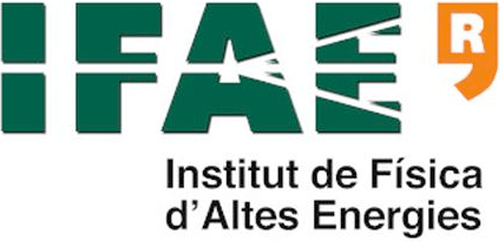
Institute for High Energy Physics (IFAE)
The Institut de Física d’Altes Energies (IFAE) is a consortium of the Generalitat de Catalunya and the Universitat Autònoma de Barcelona (UAB) created in 1991. It has been awarded the “Severo Ochoa Center of Excellence” mention twice since 2012. IFAE conducts research, both theoretical and experimental, on the frontier of fundamental physics (high-energy physics, astrophysics, and cosmology) and in various areas of applied physics, such as medical imaging and quantum computing. For this, it integrates more than one hundred researchers of international origin.
Project Partners

Institut Ramon Llull
The Institut Ramon Llull is the public institution responsible for promoting Catalan language and culture internationally. The Institut represents a cultural and linguistic community of more than 10 million people who participate actively in global events and conversations through performing arts, literature and knowledge exchange. Created in 2002, the Institut is a consortium formed by the Government of Catalonia, the Government of the Balearic Islands and Barcelona City Council.

Hac Te
Explore and develop intersections between art, science and technology to boost the digital transformation of society: this is the aim of Hac Te (Art, Science and Technology Hub), promoted by catalan institutions of great relevance to make Barcelona a global centre for research, training, dissemination, transfer and production in this field.
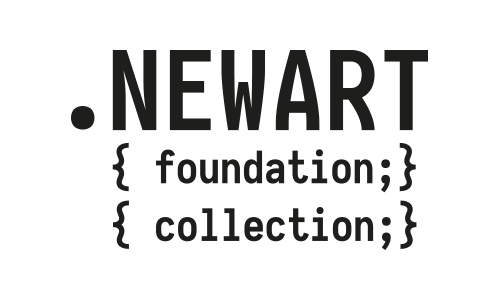
.NewArt { foundation;}
The .NewArt { foundation;} is based in Reus, Catalonia. Its ambition is to help the artistic community develop new technological, scientific, conceptual, and social practices. The foundation disseminates art at the intersection and transgression of science and technology as a strategy for social development and empowerment. It acts not just as a witness, but as an active agent.
